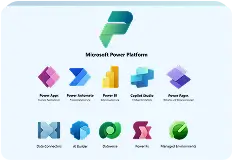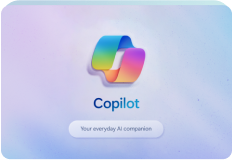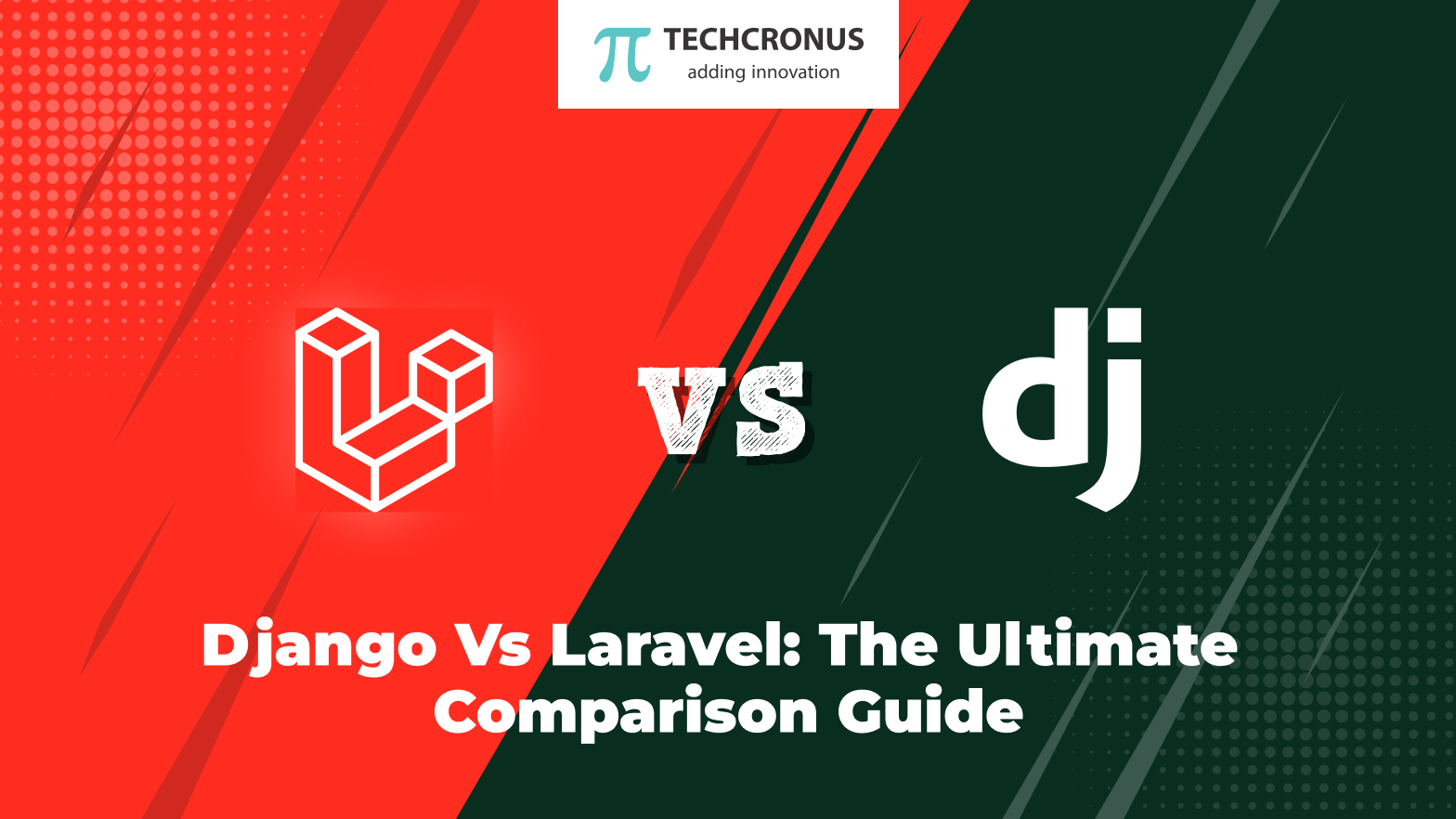Table of Contents
Django Vs Laravel
If you’re seeking a comparison guide for beginners between Laravel and Django, you’re in the right place. Web development has gained significant attention due to the variety of frameworks, features, and capabilities it offers. Amid this popularity and the growing need for flexible development options, the field has been rapidly evolving. Two prominent backend development technologies that have emerged are Django and Laravel.
Django is a Model View Template (MVT) framework, an open-source platform for web development platform built on Python called Django. It is particularly well-suited for creating complex web applications. On the other hand, Laravel is based on the Model View Controller (MVC) framework, and it’s built using PHP. Laravel is also open-source and is used for a wide range of applications, including the development of Content Management Systems (CMS). This framework offers numerous features and capabilities to developers.
| Django vs Laravel | Django | Laravel |
| Framework | The Django framework is based on the Python. | It’s a web application-based framework, and the language is easy to learn and implement. |
| Performance | Django has Python which is very fast in executions. | Larvel uses PHP, it is slower compared to Python. |
| Extra & Inbuilt Tools | Various external tools are available according to applications. | Don’t have much tools for various activities. |
| Compatibility | Multilingual supports for different platforms. | Various namespaces and interfaces for utilizations. |
| Methodology | ORM for application & database interface. | ORM for namespace and other things. |
| IDE | Easy, faster and lightweight IDE for executions. | To run cron job, here you need queue and events. |
Laravel vs Django | Django vs Laravel 2023
What is Laravel?
Laravel is an open-source PHP web application framework designed to make web development more accessible and efficient. It follows the Model-View-Controller (MVC) architectural pattern, which separates an application into three main components: models (representing data and database interactions), views (handling user interface), and controllers (managing application logic).
Benefits Of Laravel
Laravel offers several benefits that contribute to its popularity among developers. Here are some of the key advantages of using Laravel for web application development:
Elegant Syntax and Developer-Friendly: Laravel’s syntax is clean and expressive, making the codebase more readable and maintainable. This encourages developers to write high-quality, structured code.
MVC Architecture: Laravel follows the Model-View-Controller (MVC) architectural pattern, which separates concerns and promotes modular development. This separation enhances code organization and reusability.
Artisan CLI: Laravel provides the Artisan command-line interface (CLI), offering a wide range of commands for automating common development tasks. This includes generating boilerplate code, managing databases, running tests, and more.
Database Abstraction with Eloquent: Eloquent is Laravel’s built-in Object-Relational Mapping (ORM) system. It allows developers to interact with databases using PHP objects and provides a straightforward way to define and manage relationships between models.
Routing and Middleware: Laravel simplifies routing by providing an expressive syntax for defining application routes. Middleware allows you to add layers of logic to HTTP requests, enabling tasks like authentication, logging, and more.
Authentication and Authorization: Laravel offers a comprehensive authentication and authorization system out of the box. This feature simplifies user management, registration, and access control for your applications.
Blade Templating Engine: Blade is Laravel’s powerful templating engine, offering features like template inheritance, control structures, and partials. Blade templates are compiled to efficient PHP code, enhancing application performance.
Caching: Laravel supports various caching mechanisms, including file, database, and caching drivers like Memcached and Redis. Caching can significantly improve application performance by reducing the need for repeated computations.
Queues and Jobs: Laravel’s built-in queue system allows you to handle time-consuming tasks asynchronously. This enhances application responsiveness and ensures a smooth user experience.
Events and Listeners: The event-driven architecture in Laravel enables you to define events and their corresponding listeners. This promotes decoupling and modularity in your application, making it easier to manage complex logic.
Testing Support: Laravel comes with built-in support for unit testing and integration testing. The framework provides testing utilities and a convenient testing environment to help you write and run tests effectively.
Security: Laravel incorporates security practices such as protecting against SQL injection, cross-site scripting (XSS), and cross-site request forgery (CSRF) attacks. It also encourages best practices for data validation and sanitization.
Community and Ecosystem: Laravel has a large and active community of developers, which means you can find ample resources, tutorials, packages, and support online. The ecosystem of Laravel packages and extensions through Composer further enhances the framework’s functionality.
Scalability: With proper architecture and optimization, Laravel can be scaled to handle large and complex applications efficiently.
What is Django?
Django is an open-source web framework built on the Python programming language, designed to simplify and accelerate the process of creating dynamic web applications. Following the Model-View-Template (MVT) architectural pattern, Django divides an application’s components into distinct layers, each responsible for specific tasks. The Model manages data storage and retrieval, the View handles the presentation logic and user interface, while the Template generates dynamic HTML content. With its integrated admin interface, Django streamlines backend management tasks, enabling developers to efficiently handle data operations. Additionally, Django offers URL routing, forms handling, authentication, and a rich ecosystem of third-party packages through its active community. Known for its clean code syntax and a wealth of built-in features, Django empowers developers to craft robust and scalable web applications while promoting best practices and security measures.
Notable Django Features and Benefits
Django, as a popular web framework, offers a plethora of notable features and benefits that contribute to its widespread adoption among developers. Here are some of the key features and advantages of Django:
Rapid Development: Django’s “batteries included” philosophy provides a wide array of built-in tools, libraries, and features that accelerate the development process. This allows developers to focus on application-specific logic rather than dealing with repetitive tasks.
MVT Architecture: Django’s Model-View-Template (MVT) architecture promotes a clear separation of concerns. This modular structure enhances code organization, reusability, and maintainability.
ORM (Object-Relational Mapping): The integrated ORM in Django enables developers to interact with databases using Python classes and objects. This abstraction simplifies database operations, eliminates the need for writing raw SQL queries, and facilitates seamless data modeling.
Admin Interface: Django’s automatic admin interface is a powerful tool for managing application data. It generates a user-friendly interface based on defined models, allowing administrators to perform CRUD operations without writing custom admin views.
URL Routing: Django’s URL dispatcher makes it easy to map URLs to specific views, resulting in clean and organized URL structures. This enhances user experience and simplifies URL management.
Template Engine: Django’s template language facilitates the creation of dynamic and reusable views. It supports template inheritance, filters, loops, and conditionals, enabling efficient HTML generation.
Security Features: Django incorporates various security measures to safeguard against common vulnerabilities, including SQL injection, cross-site scripting (XSS), cross-site request forgery (CSRF), and more. It encourages secure coding practices.
Authentication and Authorization: Django provides a comprehensive authentication system, making it simple to manage user registration, login, and password recovery. It also supports fine-grained access control through permissions and groups.
Forms Handling: Django’s forms framework streamlines the creation and validation of HTML forms. It offers features like automatic form rendering, data validation, and protection against CSRF attacks.
Testing Support: Django promotes test-driven development by offering a robust testing framework. Developers can create unit tests, integration tests, and functional tests to ensure the reliability of their applications.
Internationalization and Localization: Django facilitates the creation of multilingual applications through its built-in internationalization and localization features. It supports the translation of content into various languages and handling different locales.
Scalability: Django can be scaled horizontally and vertically to accommodate increased traffic and demand. It supports deployment on various servers, load balancing, and caching mechanisms.
Community and Ecosystem: With an active and supportive community, Django benefits from extensive documentation, tutorials, and a wide range of third-party packages available through the Python Package Index (PyPI).
Flexibility: While Django comes with many built-in components, it also allows developers to integrate third-party libraries and customize aspects of the framework to suit specific project requirements.
Notable Django Benefits
Many similarities between the apps may be created using Django and Laravel. However, one is dependent on PHP while the other is dependent on Python.
However, the decision is fully dependent on your requirements, favorite features, and language.
Additionally, get in touch with us if you’re looking for a top-notch platform to build or apply any of the aforementioned platforms. With our years of experience and skill in Django and Laravel development, we are leaders in the most significant development ever.
-
Which programming languages are Django and Laravel based on?
- Django is based on the Python programming language.
- Laravel is based on the PHP programming language.
-
What are some key architectural patterns they follow?
- Django follows the Model-View-Template (MVT) pattern, which is similar to the Model-View-Controller (MVC) pattern.
- Laravel adheres to the Model-View-Controller (MVC) pattern.
-
What are the primary benefits of Django and Laravel?
- Django offers rapid development, an integrated admin interface, robust security features, and a versatile ORM.
- Laravel provides an elegant syntax, Artisan CLI for automation, a template engine (Blade), ORM (Eloquent), and features like middleware and queues.
-
Which one should I choose: Django or Laravel?
- Your choice depends on your familiarity with the programming languages, project requirements, and personal preferences. If you’re comfortable with Python, Django might be suitable; if you’re experienced with PHP, Laravel could be a good fit.
-
Can I use these frameworks for different types of projects?
- Yes, both frameworks can be used for various types of projects. Django is often favored for its robustness in complex applications, while Laravel’s elegant syntax and developer-friendly features make it suitable for a wide range of projects, from small websites to enterprise-level applications.






















